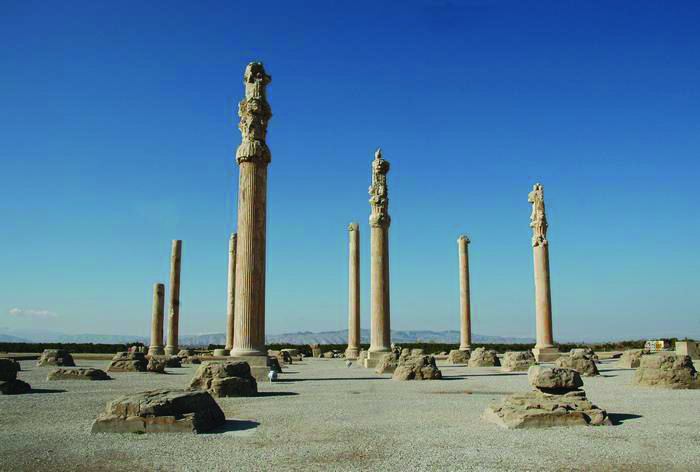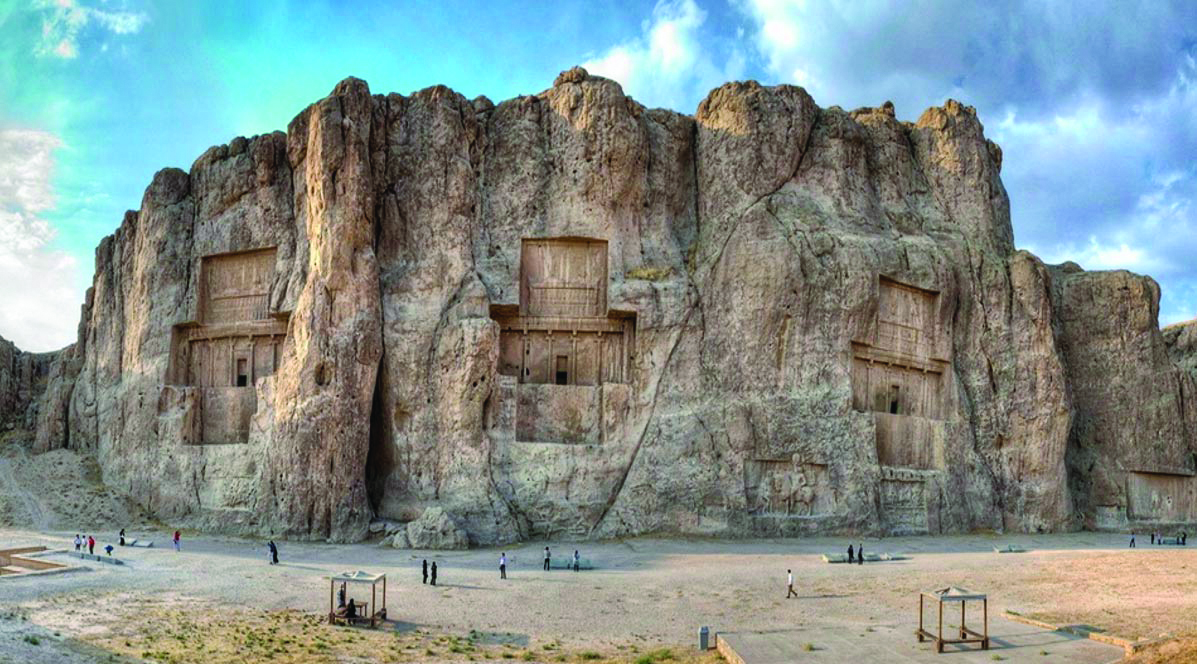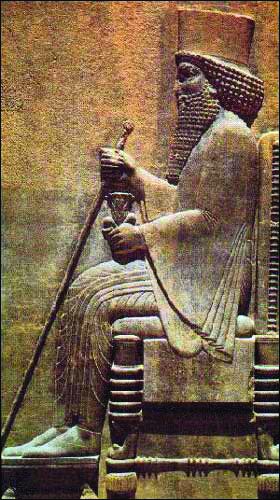Takht-e-Jamshid or Persepolis
The most important historical monument Iran can boast of is Takht-e-Jamshid or Persepolis. Persepolis means “City of the Persians”. However, most Iranians prefer to refer to it as Takht-e-Jamshid (throne of Jamshid), although the monument has nothing to do with King Jamshid of the Peshdadian dynasty. Persepolis was envisioned by Darius the Great and his sons and successors continued to build it till Alexander destroyed it in 330BCE. It was a citadel of peace built without walls or barricades, a place where various nations congregated in peace, love and friendship. Even in its ruined state, Takht-e-Jamshid looks stunning. It is believed construction took nearly 180 years and its architecture profoundly influenced Mauryan art in India. The four Lions capital on the Ashoka pillar found at Sarnath and Sanchi, which is the emblem and official seal of the Government of India today, traces its roots to Takht-e-Jamshid.
Takht-e-Jamshid covers an area of 1,25,000 square meters and is built on a platform rising between 8 to 18 meters above the plain. The high terraces can be accessed by a double flight of stairs (111 steps on each side) so spacious and gentle, that horse-driven chariots could easily ply over it. It was Darius who started building Takht-e-Jamshid, but it was his son, Xerxes, who developed it further and completed it.
Apadana – The Royal Throne Room
 The Apadana is the largest structure at Takht-e-Jamshed. An excellent record of the costumes, weapons, races and traditions of the people, nearly two and-a-half millennia ago, is carved on the eastern grand staircase of the palace. People of various nations, including India, are shown bringing gifts to the great King.
The Apadana is the largest structure at Takht-e-Jamshed. An excellent record of the costumes, weapons, races and traditions of the people, nearly two and-a-half millennia ago, is carved on the eastern grand staircase of the palace. People of various nations, including India, are shown bringing gifts to the great King.
At some distance in the mountain are the astodan of Artaxerxes II and Artaxerxes III. Though the ravages of time have leveled to the ground the most imposing edifices of the Achaemenian period, the ruins that still remain serve to reveal the departed grandeur of Persian architectural masterpieces. According to Strabo, every new King constructed a new palace, which bore his name, and had his image engraved upon it, together with a cluster of buildings, which served as treasuries and storehouses to receive the vast tributes from the various subject races.
Naqsh-e-Rustom – The Persian Necropolis
At Naqsh-e-Rustom one can see the royal astodan of Darius the Great and other Achaemenian Kings. Carved below the rock-cut astodan of the Achaemenian Kings are Sasanian sculptures of tremendous artistic merit. The external features of the astodan represent the facade of a  palace. Four bull-headed columns, two on each side of a double recessed doorway, support an entablature. Over this is the exquisitely carved throne consisting of two stages in bas-reliefs, depicting the figures of the vassal nations. The King is portrayed standing on a triple-level pedestal with his left hand resting on a bow and the right hand lifted in prayer or adoration. There is a fravashi (the wings of the fravashi are of an old rectangular design) hovering above the figure of the King who is standing before a fire altar with the sun shining high up in the extreme right-hand corner.
palace. Four bull-headed columns, two on each side of a double recessed doorway, support an entablature. Over this is the exquisitely carved throne consisting of two stages in bas-reliefs, depicting the figures of the vassal nations. The King is portrayed standing on a triple-level pedestal with his left hand resting on a bow and the right hand lifted in prayer or adoration. There is a fravashi (the wings of the fravashi are of an old rectangular design) hovering above the figure of the King who is standing before a fire altar with the sun shining high up in the extreme right-hand corner.
Like the Pharos of Egypt, the great Achaemenian kings had their astodan or final resting place built in their lifetime.
Darius The Great Inscribed The Following On His Astodan:
“Thus says Darius the King: Ahura mazda saw this world in confusion and gave it to me. He made me King, I am King. By the Grace of Ahuramazda, I established it in its place. What I ordered them, this they did, as it was my will. If thou thinkest: ‘not vast is the country, which King Darius holds’, then look in that image at those who carry my throne, there thou wilt witness them. Then will it be known unto thee that the spear of a Persian man has pushed its way afar, then will it be known unto thee that far from Persia has a Persian man fought his battles.”

Darius’ Pride In His Persian And Aryan Lineage:
At Naqsh-e-Rustom, as also at Persepolis, Darius proclaims his royal lineage, as, “I am Darius, the Great King, King of Kings, King of the countries of all races, King of this far-reaching earth, son of Hystaspes, the Achaemenian, a Parsa (Persian), the son of a Parsa (Persian), an Aryan, of Aryan lineage.” (Parsa Parsa-ha Puthra Arya, Arya Chithra).
Historians may have titled Darius as ‘the great’ for his leadership and the vast empire which he built. But, what makes him truly great is his love for the truth and justice, his sense of development and love for his subject nations. He is depicted at his final resting place praying before an open fire altar with his right hand lifted in prayer or salutation. But, he is not known for building fire temples. He is known for building roads, promoting art and architecture, caravansaries, postal systems, canals, bridges and waterways! He believed in Ahura Mazda and believed in happiness!
- Gratitude To The Wise Creator - 18 May2024
- Celebrating Motherhood - 11 May2024
- Parsi Thy Name Is Humour! - 4 May2024
